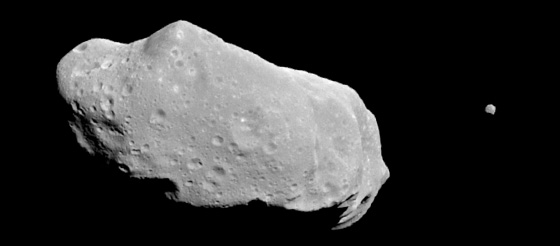
The International Asteroid Search Campaign (IASC) is a program for high school and college students who search just hours-old astronomical images for original discoveries. These discoveries include Main Belt asteroids and near-Earth objects (NEOs). Students download the images on a daily basis, perform the analysis with provided software tools, and report their discoveries, which ultimately are recognized by the Minor Planet Center (MPC; Harvard University) and the International Astronomical Union (IAU).
This program is brought to schools at no cost for either participation or the software as an educational service provided by the Astronomical Research Institute (ARI; Charleston, IL), Hardin-Simmons University (HSU; Abilene, TX), Global Hands-On Universe Association (Portugal), and Lawrence Hall of Science (University of California, Berkeley). The software is provided by Astrometrica (Austria).
During times of Moon-less skies, the ARI takes images along the ecliptic using its 0.61-m and 0.81-m telescopes. The following morning these images are prepared and made available to the participating schools. The schools go to Hardin-Simmons University web site (http://iasc.hsutx.edu) where they download the images and use the software package Astrometrica to produce a plate solution and identify all of the moving objects. Astrometrica checks to see which of the objects are found within the MPC database. Those objects not found are identified as new discoveries
In order to complete the discovery, the ARI must take a follow-up image within seven days. When this is completed, the MPC officially recognizes the discovery and credits the students having conducted the analysis.
Search campaigns are run for 30 days at a time. A key goal of these campaigns is to establish ongoing astronomy research programs at high schools and colleges. These schools will be able to directly access the images from the Astronomical Research Institute on an ongoing basis, and integrate these searches into their science curriculums.
If you would like your school to participate in the International Astronomical Search Collaboration (IASC), contact Dr. Patrick Miller at pmiller@hsutx.edu. Students at your school can make original discoveries of Main Belt asteroids and important NEO observations as part of the NASA Near-Earth Object Project. There is no cost to participate in this online Internet-based IASC program. Students participate in 45-day search campaigns, studying images taken just hours before at the ARI Observatory (Charleston, IL).
Dr. J. Patrick Miller, Director
Educational Reach-Out Programs in Astronomy (EuROPA)
Holland School of Science & Mathematics
Hardin-Simmons University
Abilene, Texas
